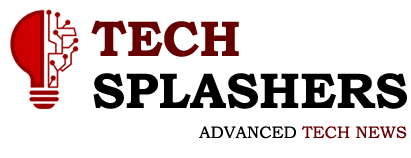How Tech Enables The New World Of Work

Collaboration is essential to getting things done on time and producing high-quality results, but remote work presents obstacles to teamwork. When employees aren’t working near each other, the loss of proximity can make communication difficult. While conference calls and email chains are common standbys, it’s too easy to leave someone out.
Relying on these resources can slow things down as documents are shared multiple times and messages get buried or lost. Technology that extends the capabilities of old-school methods can enhance workplace collaboration rather than impede it.
Whether teams are split between countries or corporate and home offices, modern tech platforms improve information accessibility and knowledge sharing. Below are four of the ways technology helps teams establish productive working relationships.
Table of Contents
Keeps Everyone On Task
Even with remote and hybrid work, meetings aren’t completely avoidable. In comparison to traditional office settings, bringing remote teams together to discuss ideas and projects can be more valuable. Virtual meetings may be one of the only times employees get to interact with each other in real time. But without a shared agenda, meetings can quickly get sidetracked and
end up being a waste of everyone’s time.
With online meeting agenda templates, team leads and managers can put together a framework for upcoming discussions. Rather than winging it, each employee can use the agenda to prepare for the meeting beforehand. Team members will have time to gather their thoughts since they’ll get a sense of how the meeting is going to flow.
Agenda templates can also facilitate the organization of information and topics in meetings with more than one presenter. Employees can identify who will lead separate portions of the meeting and see how individual subjects fit together. Instead of waiting for one speaker to improvise for
another, presented topics can relate better. And those leading the meeting can avoid distractions and mitigate the chances side discussions will take over.
Organizes Information
When information is scattered among different files, applications, and workers’ minds, teams can waste time looking for what they need. Research shows that 19% of a typical office worker’s time is spent searching for and gathering information. For data workers, it’s much worse. These teams can lose 50% of their workweek gathering information and duplicating efforts.
Project management and collaboration tools ensure documents and information are in a central place. Everyone on the team can access and share data from the same platform instead of needing to hunt information down. In addition, all employees will know the data and files actually exist. Sometimes teams can lose productivity and produce lackluster results because they don’t know what valuable information the organization has.
With file-sharing tools, employees have access to identical resources and can organize their individual contributions. When someone asks for a critical document, they won’t spend time searching through email inboxes or USB drives. When appropriate documents are matched to projects, workers can instantly get what they need. They won’t have to figure out who has what.
Builds Relationships And Development Opportunities
Individuals in remote and hybrid teams perceive that they get more done during their workdays. Some of the reasons why include avoiding distracting conversations with peers and office noise. But when you remove the social aspects of working in a team, remote workers can also feel left
out.
They might perceive they’re missing training and networking opportunities. Research reveals 53% of remote employees have anxiety about being left out of meetings and office activities. They also fear that they’re being overlooked for promotions and pay raises.
Workers with remote and hybrid schedules can be less visible to managers and peers in the organization. However, communication platforms and tech tools even out the playing field. Instant messaging, discussion boards, and project management features can document employees’ contributions and perspectives. Videoconferencing helps remove physical barriers to face-to-face interactions, and co-workers can begin to put faces with names.
Increased interactions between in-office and remote employees can also identify mentoring and professional development opportunities. Tech tools and platforms enable training and learning via group or individual sessions. Organizations might develop internal materials and courses to share with others who are interested in certain skills or career paths. Alternatively, vendors that specialize in specific subject areas can deliver self-paced or instructor-led courses.
Increases Efficiency
When multiple employees have to collaborate on a document, it can be frustrating to email a file back and forth. A member from the legal team makes track changes to marketing’s contributions. Then an executive-level manager makes additional suggestions to the wording in a few paragraphs.
With all these edits and file changes, there’s a good chance someone will open an earlier version of the document. It’s also possible a crucial contributor won’t see an email in time, delaying a project’s milestone. And everyone has to download copies of the document from an email app and save it to an individual location. Employees can end up with several saved versions of the same file, which takes up additional hard drive space or network resources.
Cloud-based solutions eliminate the need to sort through multiple document versions and take up extra storage space. Employees can make their edits and contributions on shared files that are stored in one location. Team members can work on documents from anywhere with an internet connection, preventing sharing delays and misplaced files. Cloud-based documents also mean employees don’t have to connect to the Internet and a VPN service to gain access.
Conclusion
In integrated work environments, team members have individual roles to fulfill, but they can’t accomplish their objectives effectively alone. Co-workers rely on each other’s knowledge, skills, and perspectives to complete tasks on time and according to quality standards. While in-person
teams don’t necessarily work better together than remote workers, a lack of a central office can complicate things.
Technology, such as project management, videoconferencing, and communication platforms,
helps teams overcome physical and mental barriers to collaboration. With these tools, all employees can gain instant access to the same information and follow an outline of tasks. Data is organized in one location, document sharing occurs in real time, and remote teams can communicate face-to-face. When used to its full advantage, tech ensures each team member
remains engaged and seen.






